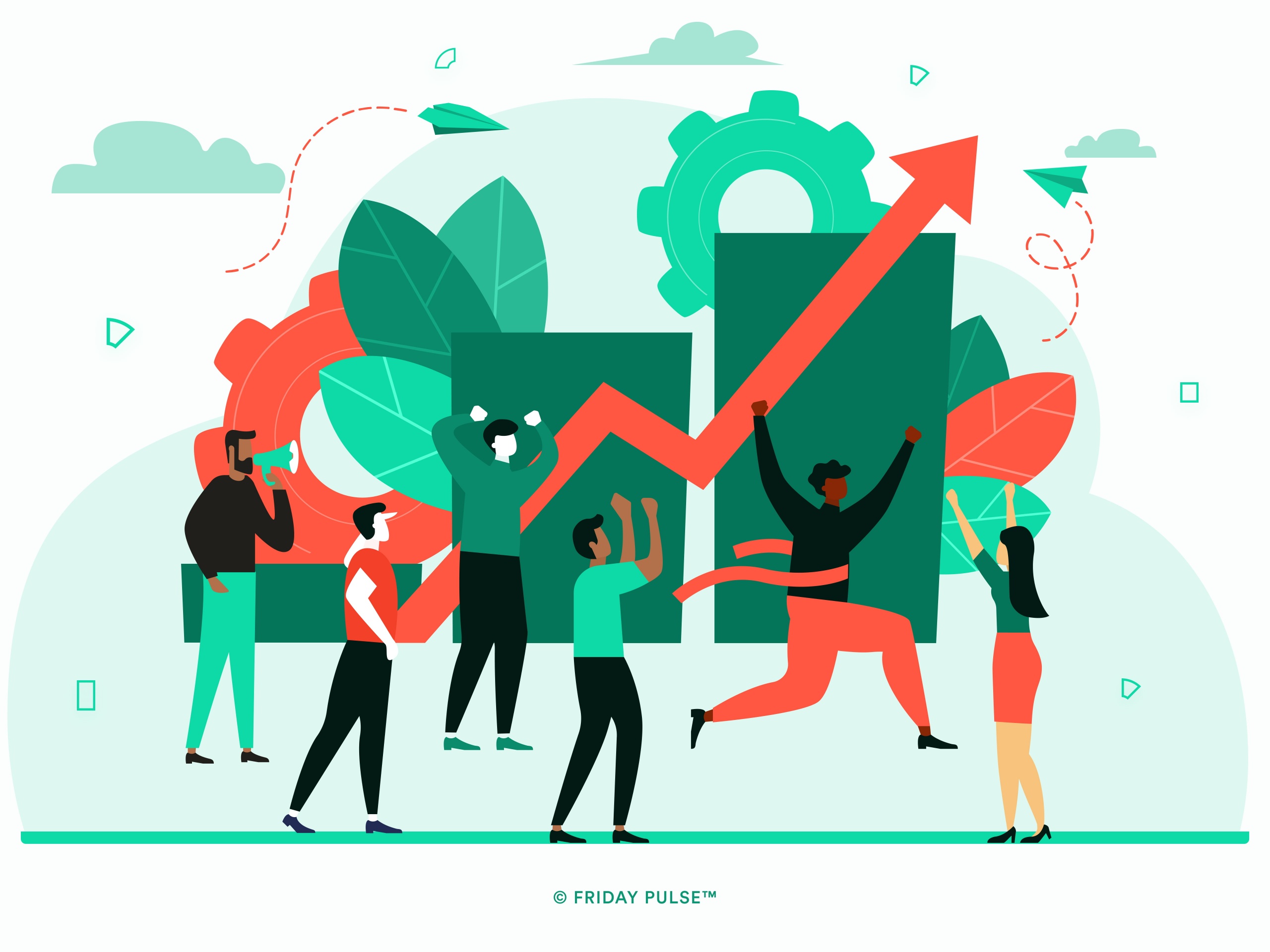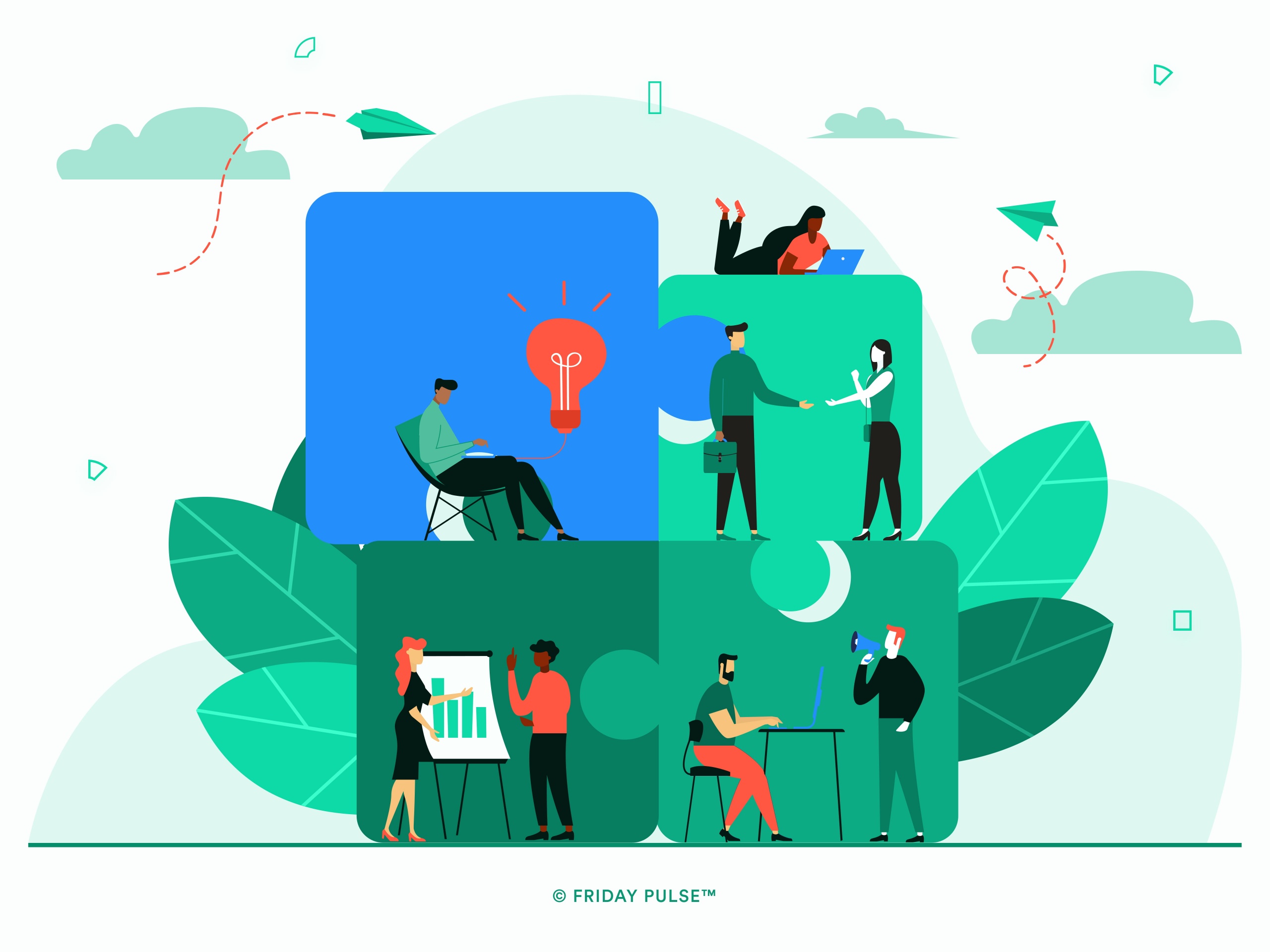This week was the 2020 Global Happiness at Work Summit, and Friday Pulse was proud
to be Gold Sponsor of the event. Sarah Metcalfe from the WooHoo
Partnership sat down (virtually) with our Founder and CEO, Nic Marks, in
a wide-ranging interview to discuss the meaning of being happy at work,
resilience in COVID-19, and the function of emotions.
Sarah Metcalfe: For a long time, people have talked about happiness at
work as being fluffy and yet you’re one of the thought leaders that say
“No, there’s math and science, and statistics behind it.” You also like
to say that “Happiness is the ultimate KPI and the best KPI for
business.”
Nic Marks: Well, employee experience is very important to business.
We spend a lot of time at work, and what is clear is that when we feel
good, we do good work. The Happiness KPI™ is a measurement of employee
experience. Employee engagement has been around for 25 years. In
business circles, engagement is a code word for productivity — increased
productivity.
While that’s fabulous for the business, that comes across as sweating
your assets instead of growing and developing them.
That’s why we talk about happiness, and we’ve developed it as a weekly
tool. At the end of each week we ask people, ‘How happy were you at work
this week?’ This sounds like a simple question, but what we’re trying to
say is, “Is your normal week good, and are you happy? Is this a better
week?”
Ultimately, what you find is that people who mainly answer ‘happy’ are
more enthusiastic and more loyal. You want them to let you know when
they’re not happy because then you can fix things. The data needs to be
a clear good/bad signal to do that. That’s what the Happiness KPI™ is —
it gives a score for every team that goes up and down.
That’s really important, what you said about measuring. It’s not just
about how you are this week; it’s about how you are overall. And when
you go down, do you have that resilience? Do they come back up, or does
it just fall off a cliff?
During the COVID-19 outbreak, across all of our clients, we witnessed a
huge dip in the data, which is unsurprising. But then people started to
bounce back.
Resilience is the shape of the curve. We look at the
characteristics of people that bounce back and what we find is that
they’re the ones with strong relationships, with a sense of purpose.
Resilience is obviously what everybody wants in a team, and it’s
inevitable that there are setbacks. The data helps us track and also
predict which teams are going to bounce back, and to empower team
leaders.
Everybody wants to know what the outcomes are when people move up the
scales. I know you’ve been able to link quite some interesting
results.
We use a five point-scale to get people’s responses. If a team moves up
half a point on average on the scale, it’s associated with a 17%
improvement in staff turnover — less people leaving. We also see an
increase in productivity — 7% — but it varies across different sectors
and roles.
In a creative role (not just in creative industries), where you need to
be flexible and adaptive and see how things connect together, then the
effects are closer to 20% rather than the 7% increase in productivity.
Wow.
In manufacturing with a repeated task, they’re lower – 3% or 4%. We see
variance if you’re customer-facing. It’s more important than if you’re a
back-room worker. Also, we find that happiness is more important for
people working remotely because people need their own energy a
little bit more.
You’ve been studying this for a while now, but is there anything that,
over the years, has surprised you about happiness at work?
There’s a lot of nuance to happiness at work, and people have a natural cynicism about
it. And there are some parts of happiness that people think means that
people are not working or don’t equate to productivity.
However, happiness is a gateway word to a whole range of positive
emotions, and they have different functionality. Emotions have a
function. They helped us survive and thrive over the millennia.
If you ask someone, “What is happiness to you?” It’s fascinating. Some
people say it’s contentment. Some will say it’s joy. Well, they’re quite
different experiences. Contentment is very low energy. It’s reflective;
it’s quiet. Joy is high energy; it’s noisy. They release different
energies.
In fact, we can have a whole array of positive emotions. Curiosity and
interest are about exploring or focusing. We can think about enjoyment
and laughter, about bonding and connecting. Some of these emotions are
important for forming a group or bonding.
When people are doubtful about happiness, they’re missing out on how
happiness affects team performance. Bonding a group helps your team collaborate. They’re then
able to become more cognitively engaged and emotionally agile.
So, if your teams are laughing and enjoying themselves for 10% of the
time, great. If it’s 80% of the time, yeah, okay. But, it’s about
time-sharing and about having that whole array of emotion or
experiences.
I wanted to pick up on a point there. That connection piece sounds
like laughter and fun, and creating the connection with the team — that
leads to psychological safety that then allows you to unleash those extra bits. Is that
fair to say?
It’s definitely a key element of bonding, but trust goes beyond that
too. Trust is about consistency. We trust someone when there’s a
consistency in our relationship. When we have a boss or a colleague who
is inconsistent, that’s difficult to deal with. You don’t trust them
because you don’t know where you are with them all the time.
If you’ve got a team that’s consistent, that accepts failure, tries new
things, that’s stimulating creativity. Creativity is about cognitive leaps.
And connection — especially creative connections — are really important.
I think creativity is probably the most important business quality that
we need because it’s the precursor to innovation. When we’re in a
positive mood, we’re more able to see the bigger picture, and there are
more of those connections.
I love that idea. We know so much of the opposite of happiness etc.
You know you can’t be creative when you feel shut down like that. It
doesn’t work out for us. Before we wrap up, I would love to know what
are your best tips? I know you’ve been working with all some amazing
companies and seeing big changes in them.
We talk about there being Five Ways to Happiness at Work: Connect, Be Fair, Empower,
Challenge, and Inspire. My tips are around those, but I’m going to make
them slightly COVID-19 related because, right now, that’s where we are
in the world.
I think that couldn’t be better.
A Connect tip is to try and reduce the number of people on a Zoom
call—five maximum. If
our groups get larger, eventually the conversation gets too large, and
there’s crosstalk, and the conversation breaks up again.
Being fair is about respecting time boundaries. Make sure that people don’t work into the
evenings and don’t start too early. If we can respect each other’s time
boundaries, then we’ll have gone a long way.
And, ask people how they really feel. I’m a big advocate on having real
discussions. To go beyond OK, ask how people how they feel and follow up
with open-ended questions that will deepen conversations. When you leave
space for people to answer, you’ll be amazed at what happens.
(Note: This interview has been edited for clarity)



